How to show food hygiene compliance using Pilla.
Article Content
How to show food hygiene compliance to inspectors.
This article has been written by Pilla Founder, Liam Jones, click to email Liam directly, he reads every email.
At some point, your hospitality business will be inspected to check it’s compliance and general food hygiene standards. If you’re based in the UK, then this will happen through an unannounced visit by your local authority and your business will be given a public score to reflect how hygienic and safe it is for customers.
The best way to get a good high food hygiene rating from your local authority is to constantly use good food hygiene practices and I’ve written other blogs on how you can do this. But because the visit is unannounced, at some point, an inspector will visit and you won’t have total control over which staff members are there to supervise the visit.
That means you need to make sure that all your teams know how to demonstrate compliance using Pilla. One of the most frustrating things that could happen, is that you are doing all the right things and you are actually compliant, but your teams don’t know the best way to show an inspector when they arrive, so you get a lower food hygiene rating score than you deserve. That’s what this article will help you avoid - it will show you all the things that you show an inspector when they arrive on Pilla to display your compliance and good hygiene.
1. Show your food safety management system
Often the first thing that an inspector will ask for is your food safety management system (FSMS), or they may call it a HACCP plan or a HACCP system. This is a legal requirement in the UK and it’s really important to make sure you understand what this is. Your FSMS is your set of written policies and processes that say why and how you will manage food hygiene.
You’ve got two options for creating a food safety management system.
1. If you’re in the UK and you’re not a complex food business (like a fine dining restaurant), you can use Safer Food Better Business (SFBB). The advantage is that it’s the system that the inspector is most familiar with. If you are using SFBB then it is available as a paper based file with hand written notes or a digital file (PDF).
2. If you have slightly more complex food methods or you just want a more thorough set of food policies then you can use your own bespoke food safety management system or you can use the Pilla food safety management system which can be found in full here.
2. Show your daily due diligence on the planner
The inspector may choose to read some of your FSMS at that time or they may come back to it later - sometimes an inspector will just want to see evidence that you have a FSMS rather going deep into it's content. But one thing that every inspector will always go deep into, is your daily due diligence. This is the set of daily and weekly tasks that your teams carry out be compliant and safe. These are recorded as 'Tasks' in Pilla and there are two ways that you can show an inspector what they want to see.
First, you can use the planner view which shows a whole week at once. Here you can very easily talk an inspector through a typical week in each of your sites and you can point out what happens in each part of the week. For example you could say "As you can see each morning we have an opening checklist which is this work activity".
The colour coding system used in Pilla will help an inspector get a snapshot of how punctual your teams are and how good they are at finishing work activities by the time that you have set. As a reminder there are four colours in Pilla.
White = future work activity not visible to staff yet
Orange = work activity unfinished
Red = work activity finished late
Green = work activity finished on time
Remember that if a work activity is showing red, it means that the work activity hasn't been completed by the time that you set. This doesn't necessarily mean that your non-compliant. If you've set a target to finished opening tasks by 10am but they actually get finished at 10.30am, it doesn't mean your non-compliant with any food hygiene laws. However it might mean that the inspector's confidence is lowered. A big part of your job in the inspection is boosting the confidence of the inspector in your ability to manage a safe team, so although it's not necessarily contradicting any compliance laws, you still should make every effort to finish a work activity by the time that you set. (This might mean putting the target back to give your teams more time).
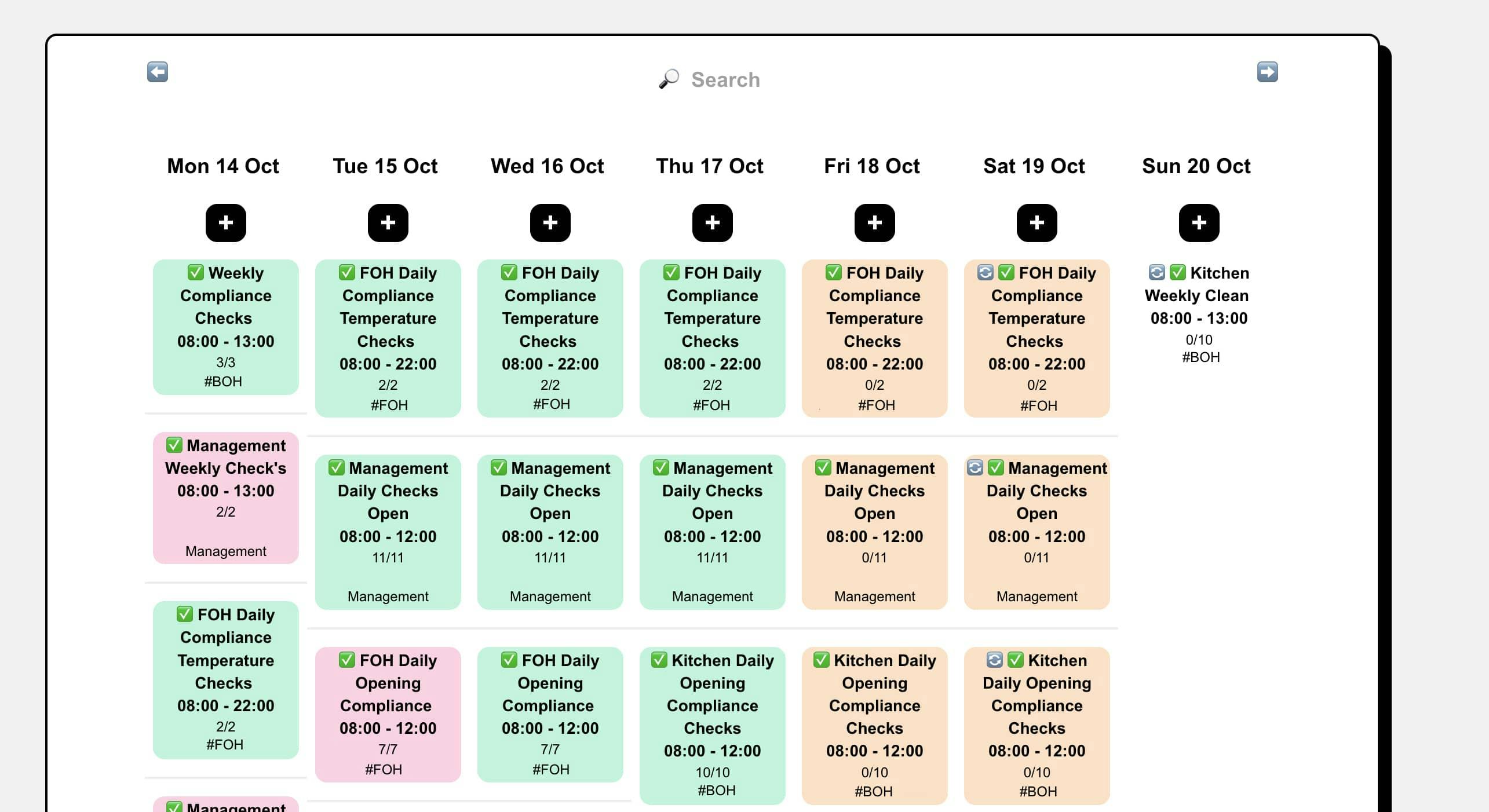
3. Show historical daily due diligence using search
Once you've talked the inspector though your daily due diligence they will have an understanding of how you have set up your compliance work activities. The next thing you can show them is some of your older work activities. You find these using the search function. Simply type something in the search bar to start the search. You can then use the additional filters to narrow down or expand the search.
For example, you could start by searching for 'Opening Checks' which will show all of your own historical opening checks, and then after that you could remove opening checks from the filter 'Name' and add a month into the filter 'Month' to show tasks for a whole month. At this point it's likely that the inspector will be ask to see a certain type of task.
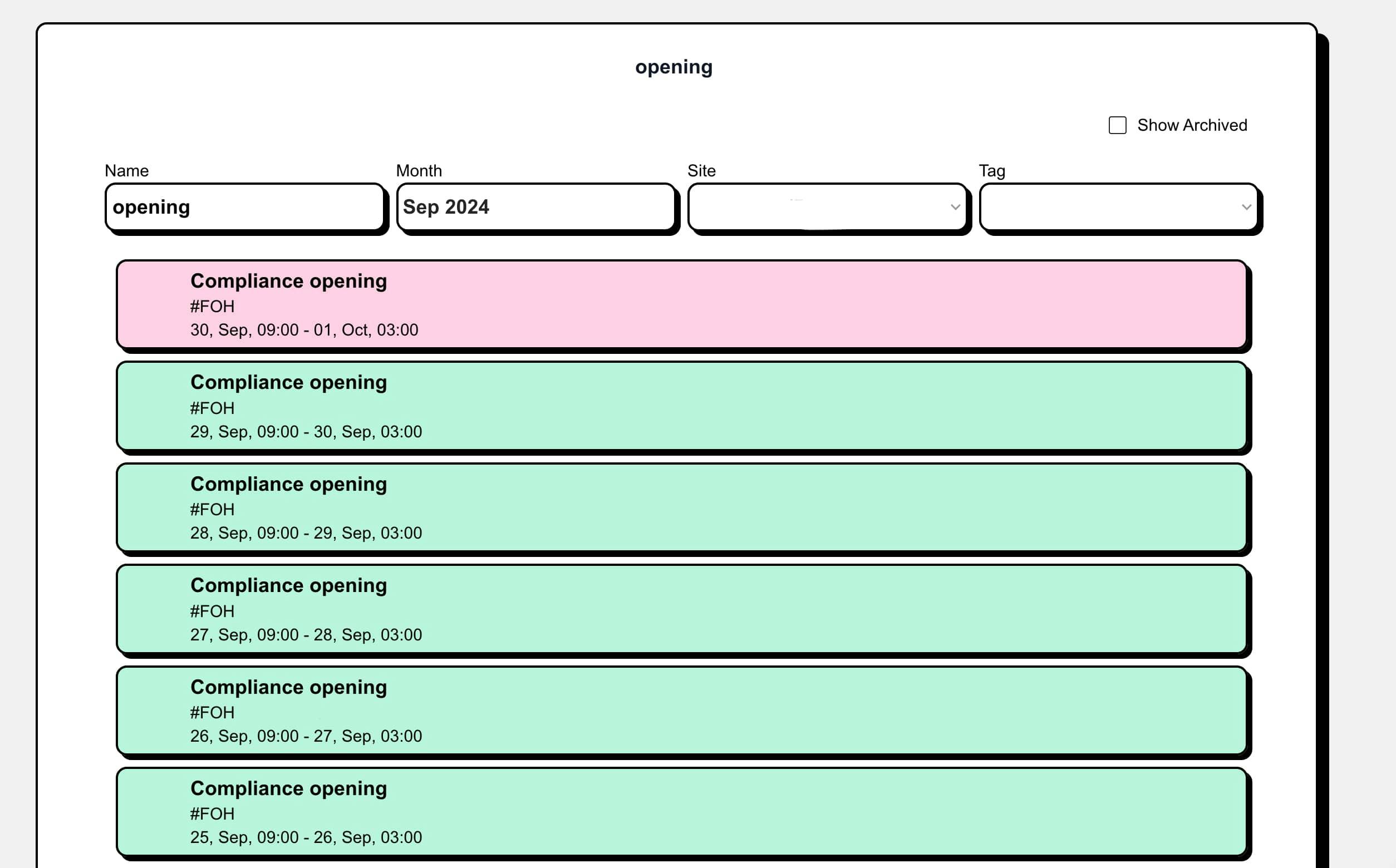
4. Show issues and corrections procedure
Things go wrong in hospitality and every inspector knows that. As I've mentioned already, inspectors are looking for confidence that you can manage a safe team and a big part of that is how you manage those inevitable issues. We have built a robust issue management flow inside Pilla which allows staff to escalate to issues to management and communicate back and forth via threads which are attached to each individual task. If you need to refresh yourself on how the issue recording process works from start to finish, click the link below.
But when the inspector arrives, your management need to be able to talk them through this process with confidence and the best way to do that is by showing them some tasks that have had had issues and and the paper-trail (communication thread) attached to the task. In the top right corner of the weekly planner, you'll see the bell icon 🛎️. Clicking that brings up your personal notifications (any communication that you have been tagged in) and any tasks with issues. By default this list shows live issues yet to be corrected. You can see this because the tasks are red (more like pink actually).
This is the first great thing to show the inspector, you can quickly show them how easy it is for you to update yourself with current live issues. But you can also include tasks in this list which have ever had an issue. So tasks which were highlighted as an issue but have now been resolved. Simply click 'Include Corrected'. This means that you can show an inspector a time when you had an issue and what you done about it. Simply click on the check and you will be taken the to check itself where you can see the full paper trail including details of the issue and how it was corrected.
Remember that you should be encouraging your team to leave as many comments as possible on tasks so that you have this information to show an inspector.
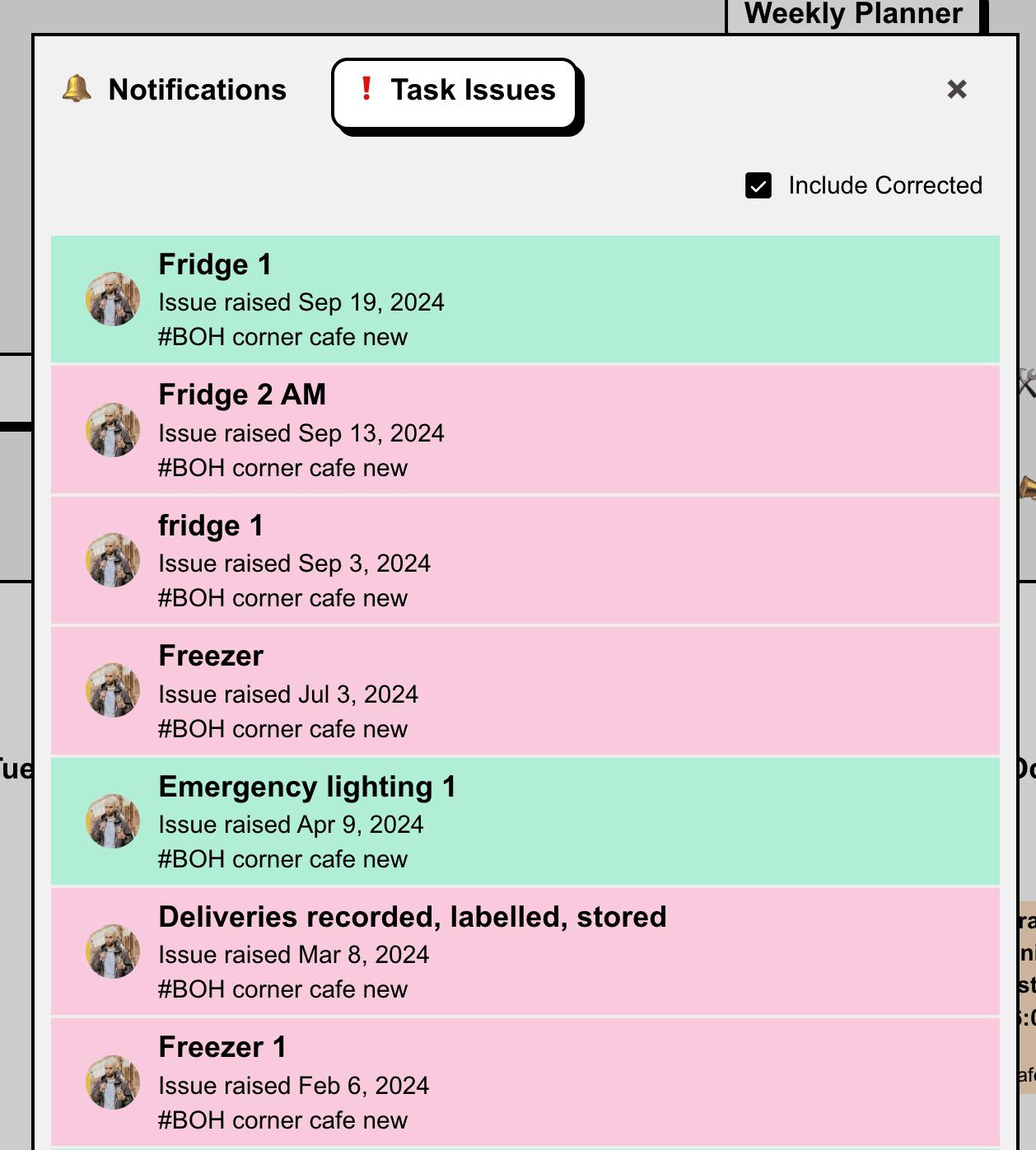
5. Show training records
Staff trained well in food hygiene are far more likely to be safe. Inspectors know this and that's why they want to see evidence that you are training staff. This includes external training courses such as food hygiene level 2 courses that your teams might take off site. But it also includes in-house training that you carry out yourself which may include things like updates to allergens on your menu. The training activity should be used in Pilla to record and forward training. It helps you get organised but it also helps you demonstrate this evidence to the inspector. You should be creating a training activity each time training happens and adding any relevant information, links or documents in the content box. This could include things like certificates or registers.
Any training which involved food safety should add the training tag. This means that you can use the search function to find all training that you have saved which is relevant to food safety and you can show the inspector. Remember that the inspector is looking for confidence in your management of a safe team, so one of the impressive features of Pilla to show the inspector is the recurring activity feature. When you add a training record, you can choose that record to recur every 1, 2 or 3 years automatically. This means that you don't have to remember when somebody's training is due for renewal, it will automatically be added to the planner.
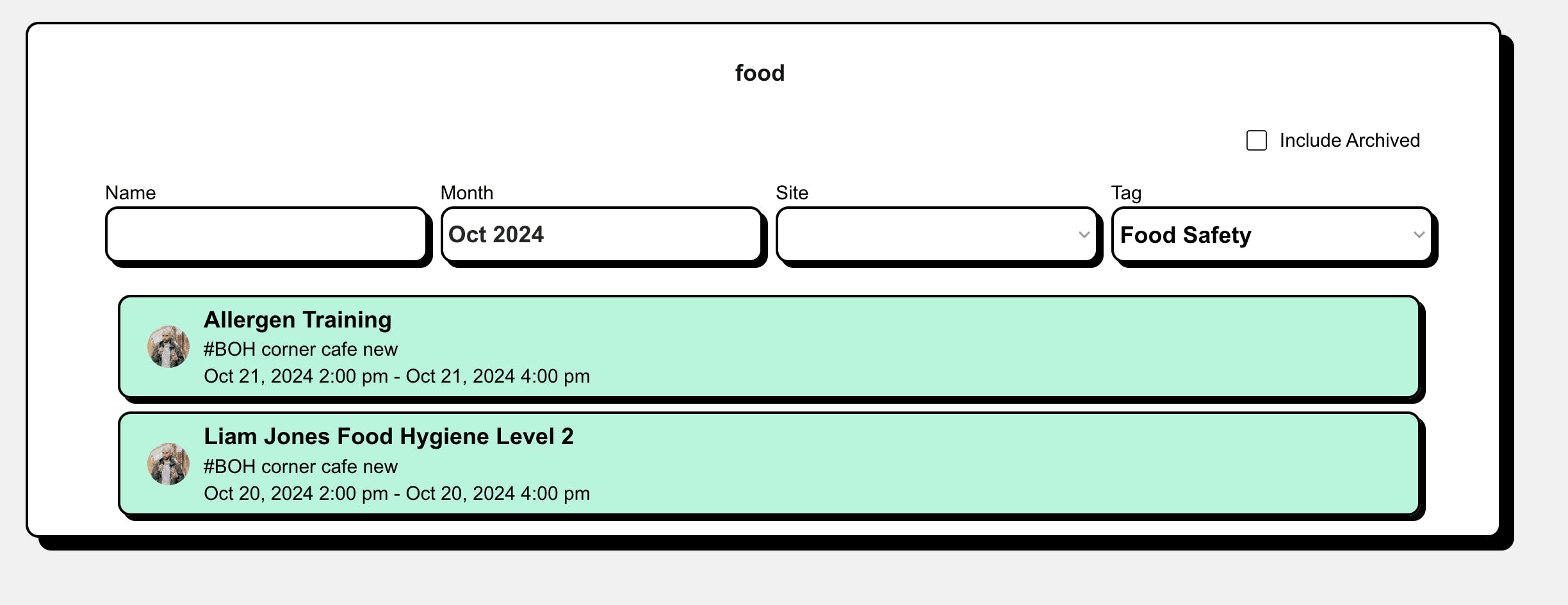
6. Show maintenance records
A huge part of every inspection will involve the inspector taking a close look at your premises. They will be looking for signs of pest activity, general cleanliness and building integrity. You can't do anything to improve that on the day but what you can do is show the inspector that you take this very easily by recording and planning your maintenance.
Just like I discussed with the training , you should be recording as much information as possible about maintenance using the maintenance tag in a work activity. This includes every type of maintenance on your building, equipment and even things like pest inspections. You can search through previous maintenance using the search feature and you can explain to the inspector how you forward plan maintenance using the recurring activity feature in Pilla.
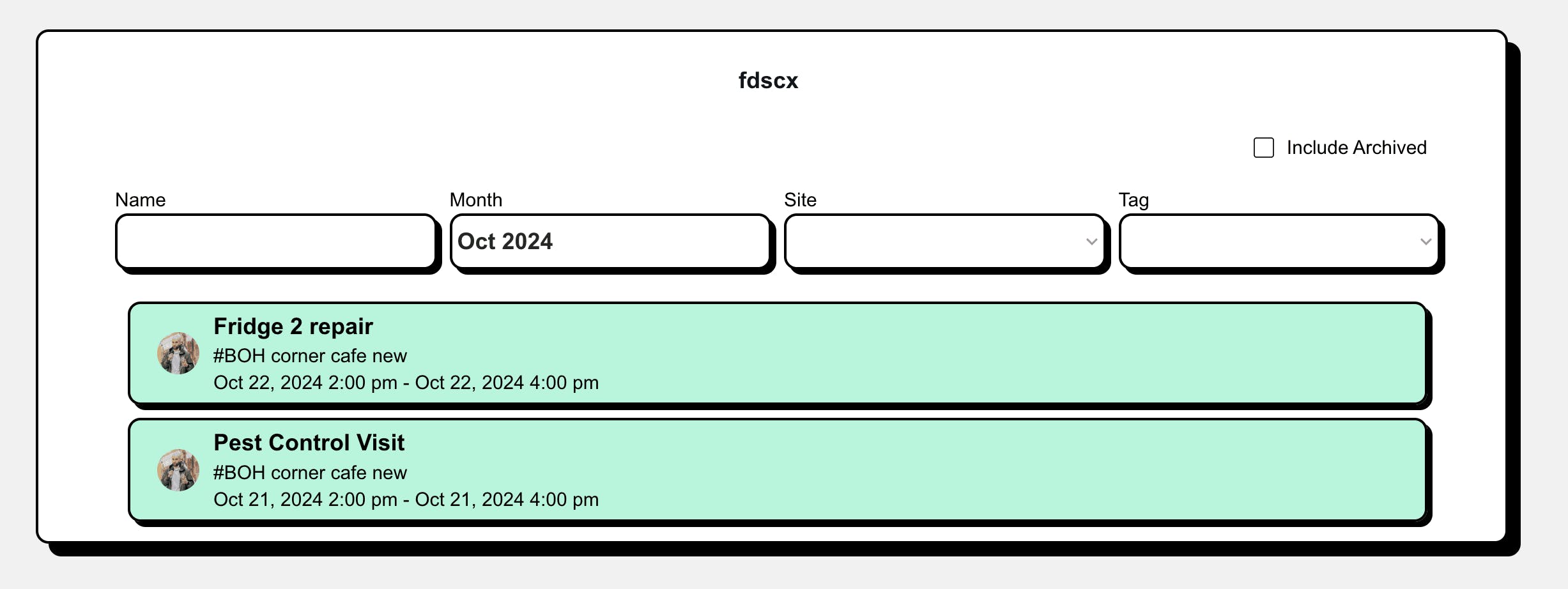
Launching soon - Join the waitlist
If you want to build more consistent deskless teams, add your email to the waitlist, we're launching very soon.